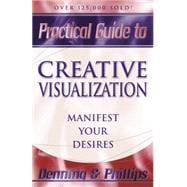
Note: Supplemental materials are not guaranteed with Rental or Used book purchases.
Purchase Benefits
What is included with this book?
| Introduction | p. xi |
| Control and Direct Your Personal Destiny | p. 1 |
| The Potent Circle | p. 23 |
| You Have a Great Future | p. 43 |
| The Life-Sustaining Flow | p. 57 |
| Spiritual Abundance | p. 77 |
| The Stairway of Success | p. 95 |
| Star Points and Multiplication | p. 123 |
| Dare to Be Powerful | p. 141 |
| Terminating a Creative Visualization Process | p. 163 |
| Helping Others See Your Vision | p. 171 |
| The Bright Lamp of Knowledge | p. 183 |
| Creative Visualization in Prayer and Worship | p. 189 |
| Maintaining Good Health | p. 199 |
| Table of Contents provided by Syndetics. All Rights Reserved. |
The New copy of this book will include any supplemental materials advertised. Please check the title of the book to determine if it should include any access cards, study guides, lab manuals, CDs, etc.
The Used, Rental and eBook copies of this book are not guaranteed to include any supplemental materials. Typically, only the book itself is included. This is true even if the title states it includes any access cards, study guides, lab manuals, CDs, etc.